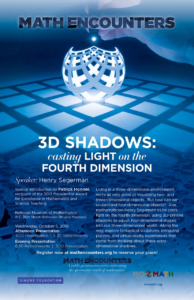My latest piece for the NYT Learning Network gets students using statistics and data analysis to create entries for the American Statistical Association‘s Election Prediction contest.
The ASA’s contest invites students to predict the winner of each state in the upcoming Presidential election, as well as the vote-share for each major party candidate. My piece offers students some basic strategies to consider when making their predictions.
A straightforward strategy for predicting the winner of each state would be to use the latest aggregate polling data from a reputable source. The New York Times offers a state-by-state probabilities chart that provides a projected outcome for each state as determined by each of several media outlets, including The Times itself as well as FiveThirtyEight and Daily Kos, among others.
Students could choose one of the outlets to use as the basis for their predictions, but to satisfy the written requirement of the contest they should be prepared to provide some justification for their choice. For example, they could research each outlet’s methodology and explain why they found one more compelling than another (perhaps more polls are used from each state, or the predictions have been more stable over time).
In addition to introducing students to several basic prediction strategies, there are plenty of links to online resources where students can explore visualizations of voting trends and research historical voting data. The lesson is freely available here.
The ASA’s contest ends October 24th, so get predicting!



